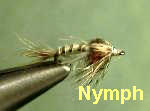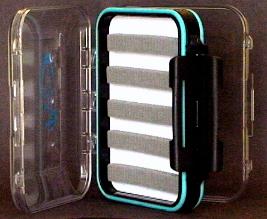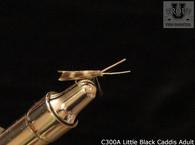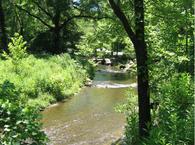General Description:
The Blue Quill sometimes known as the Mahogany Dun or Little Blue Quill is one of the first hatches of the year along with the Quill Gordons and the Blue Winged Olives. The hatch occurs slightly ahead of the larger Quill Gordon and continues over a longer period than does the Quill Gordon, making it just as important as the Quill Gordon hatch.
The hatch starts when the water temperature approaches 50 degrees F. However, for the hatch to occur, it must also be the right time of year for their cycle. In other words should the water reach 50 degrees too early, the hatch will not necessarily occur.
The trout are just as anxious to eat them as they are the larger Quill Gordons. It is not true that a larger fly will yield a strike from a larger trout as some anglers seem to think. A common mistake is to use a larger hook size for the Blue Quill. The optimum hook size is 18 or sometimes even a 20, but never a 16. The proper hook size is important but is often overlooked by anglers.
Nymph Description:

The nymphs are what we refer to as crawlers and they crawl on the rocks and the gravel in the bottom of fast moving water. The nymphs are not blue, but are indeed yellow or brownish in color, and slim in size, and about the size of an 18 hook. They are more often found in the freestone streams such as those found in the Great Smoky MountainsNational Park.
Nymph Presentation:
Just before the hatch occurs, look for the nymphs to be near riffles or faster water but in calmer water near calm pockets, eddies and of course near banks as they move to this type of water to hatch. Sometimes the water is so low that when the trout seek them, you would think that the trout is not totally submerged. Usually, the trout will not remain long in this shallow water due to the vulnerability of predators, so they grab the nymph and run to their holding water. To find the trout in this type of water requires some timing and a great deal of stealth so as not to spook the trout. You should approach the pools from the banks or behind logs or boulders
When you cast into the calm water, the adjacent faster water will cause your line to speed up presenting a less than natural drift. To avoid this, keep as much line as possible out of the water.
Before the hatch starts, use the proper weight of the nymph to get the fly near the bottom with the sand, gravel, and rocks. Again as with most nymphs use a tandem rig with an attractor fly or at least use a strike indicator to help know when the trout has taken the nymph. Also, keep a close watch on the line to observe any strike. Note that after the hatch starts, you will need to change to an emerger or dun pattern.
 See the new double sided fly boxes.
See the new double sided fly boxes.
Fish Location:
Bait/Lure Type:
Equipment:





